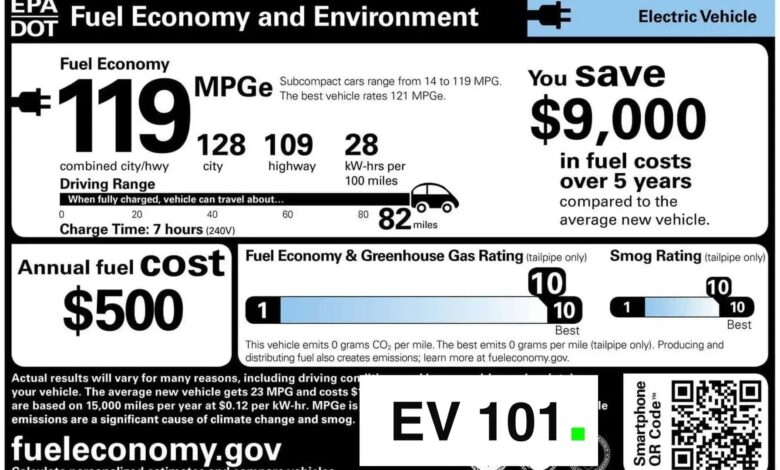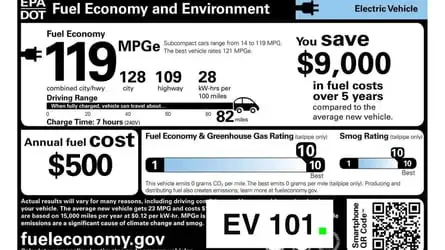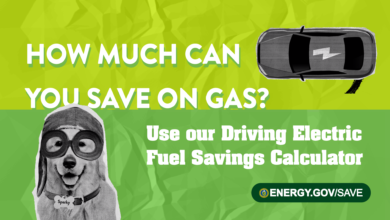Range, MPGe, Charge Time, Savings

There’s a lot of info on this one sticker.

May 3, 2024 at 11:00am ET
The federal government requires automakers to include information on a vehicle’s energy consumption, along with pricing and other information, on the so-called “Monroney” sticker that’s posted on every new light-duty vehicle sold in the U.S. It’s named for Almer Stillwell “Mike” Monroney, a U.S. Senator from Oklahoma who sponsored the Automobile Disclosure Act of 1958, which mandated the use of price stickers.
In the case of electric vehicles, the Monroney sticker prominently displays the MPGe estimates for city, highway and combined city/highway driving. The sticker also shows the kilowatt-hours of electricity needed to run the vehicle for 100 miles (expressed as kWh/100 mi). The EPA says this measurement is actually more meaningful when comparing costs and energy consumption between EVs than the MPGe rating.
This is a miles-per-gallon equivalent created by the Environmental Protection Agency (EPA) as a consumer comparison tool. It’s calculated based on a conversion factor of 33.705 kilowatt-hours of electricity, equaling one theoretical gallon of gasoline.
The sticker also notes, on average, how many miles the vehicle can operate on a charge and how long it takes to fully replenish a discharged battery using a 240-volt (Level 2) charger. When using a standard household outlet, the time will typically double or even triple.
The window sticker further notes the energy consumption range for other models in the vehicle’s size class. You’ll also find the average annual cost to keep the car or truck running, based on 15,000 miles driven at a predetermined price per kilowatt-hour for electricity. It also shows how much more or less that amount is compared to the average vehicle (a gas car with a 27 MPG combined rating) over a five-year ownership period. These numbers will, of course, differ for a given driver depending on local energy rates.
The sticker also provides ratings on a 1-10 basis for a vehicle’s smog-related tailpipe emissions and greenhouse gas emissions. Since electric vehicles produce neither of these, they automatically receive a rating of 10.
You’ll also find a “QR” code that can be scanned by a smartphone. This code takes users to a website where they can enter information about their commutes and driving habits to better estimate their energy consumption and costs.
The above information can also be found on the EPA’s fueleconomy.gov website, which allows for easy comparison among competing models. It’s available for all current and past plug-in and conventionally powered vehicles.
Read more



